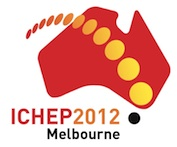Speaker
Dr
Roberto Castello
(Universite Catholique de Louvain (BE))
Description
The CMS all-silicon tracker consists of 16588 modules: aligning them with the desired precision of a few micrometers is only feasible using track based alignment procedures. Ultimate precision is now achieved by the determination of sensor curvatures in addition to the local translation and rotation of modules in space. This challenges the alignment algorithms to determine about 200k parameters simultaneously. This is achieved using the Millepede II program, interfaced with CMS software. The alignment of the detector is also monitored using its built in Laser Alignment System. For this, 3% of the silicon strip modules are illuminated by the laser beams, assuring a continuous surveillance during data taking. The system allows to monitor the alignment changes with a precision better than 10 micron and to measure the absolute alignment parameters better than 100 microns. The main remaining challenge for the alignment are global distortions that systematically bias the track parameters and thus physics measurements. These distortions are controlled by adding further information into the alignment workflow, e.g. the mass of decaying resonances. The orientation of the tracker with respect to the magnetic field of CMS is determined with a stand-alone chi-square minimization procedure. The resulting geometry is finally carefully validated: the monitored quantities include the basic track quantities for tracks from both collisions and cosmic muons and physics observables like resonance masses.
Author
Dr
Roberto Castello
(Universite Catholique de Louvain (BE))
